A war for oil #9: Digging a grave for Saddam
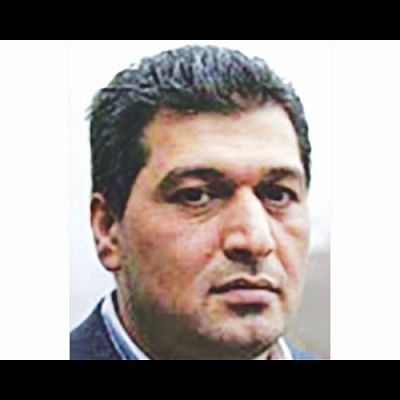
Desperate for a regime change in Iraq, the US was planning all types of unethical and immoral tricks to goad Saddam into a war even though both the US and UK leaders knew by early 2003 that Iraq did not have Weapons of Mass Destruction.
But much before that, the Americans and the British schemed jointly to find defectors who would help them prove the presence of WMD to vindicate an invasion. Accordingly, an intriguing spy operation was rolled out.
A five-page memo dated January 31, 2003 by Tony Blair's chief foreign adviser David Manning reveals Blair and Bush, in a private meeting in the White House, planned to con the world by painting a U2 reconnaissance aircraft in UN colours. The spy plane would then fly over Iraq hoping to draw Saddam's air defence fire, Bush suggested to Blair.
This would then present a clear case of violating the UN resolution and the case for armed intervention would be legitimate.
In the same meeting, Bush also suggested that the "US might be able to bring out a defector" to "reveal Saddam's secret WMD programme."
THE SPY STORY
Although the Americans could not find any defectors, they went through some clandestine works that seem to come straight from the pages of a cheap thriller. One of the fruits of the operation was Saddam's sitting foreign minister Naji Sabri whose story was covered in detail by The Telegraph.
In spring 2002, CIA's head in Paris Bill Murray was told by the French intelligence that a top cabinet member of Saddam is willing to defect and divulge information on WMD. The French still did not know who this cabinet minister was but it was indicated that he was a "clean" man who had not taken part in any of Saddam's "criminal activities."
The CIA office went into feverish activity at the prospect of the defection. But it was considered too risky for a CIA agent to talk face to face with the Iraqi minister.
An Arab former journalist living in Paris, who happened to know Naji, was hired for $200,000 to work as go-between. Murray handed the full money in advance in a paper bag along with a set of questions about the whereabouts of the WMD for the Arab journalist to ask the still anonymous cabinet member. Then the wait began.
Spring turned to summer and yet the Arab journalist had not found an opportune moment to meet the minister without drawing the attention of the Iraqi intelligence. All top Iraqis were under its surveillance then.
Finally, in September 2002, it was time as Naji Sabri flew into New York to address the United Nations.
The Arab journalist met him at the Iraqi Ambassador's residence in New York. The journalist gave Naji a couple of handmade expensive suits. Naji was to wear one of them when he addressed the UN General Assembly as a sign that he was ready to defect and spill the WMD beans.
The next day, Murray met the Arab journalist in a hotel room in New York for a debriefing meeting. Naji had told him that Saddam had intentions to have WMD, but right at that time, there was no WMD.
Disappointed, Murray headed back to Washington to prepare his report on Naji. At the airport he saw Naji Sabri on the television addressing the UN, wearing that telltale suit.
To the surprise of Murray, his report was distorted and definitely sexed up. On 5 February, 2004, after the fall of Saddam, CIA Director George Tenet, in a speech at Georgetown University, referred to Murray's report and said the "source" – Naji Sabri–had talked of Iraq "stockpiling chemical weapons" and "aggressively and covertly" developing a nuclear weapon that could be ready in 18 to 24 months.
But Murray maintained with The Telegraph that he had written no such things in his memo and that his information was twisted to make it look like Saddam had WMD. Actually his report was that Saddam was giving "stocks" of chemical weapons, left over from the Iraq-Iran war, to friendly tribes and that Saddam's scientists thought nuclear weapons could be ready in 18 to 24 months after obtaining the necessary materials.
In the end Naji Sabri did not defect and later he denied having passed any information on WMD. Who fooled whom is a question no more useful now in the light of whatever had happened – the seed of the WMD report had been sown.
The case of another Iraqi agent for CIA, Rafid Ahmed Alwan codenamed CURVEBALL, who also claimed that Iraq had stockpiled biological weapons and mobile chemical plants, is further evidence of the reckless way intelligence was gathered without any corroboration. Anybody and everybody could feed fake intelligence and the Bush administration would wave that around.
Secretary of state Colin Powell used Rafid's claims to a televised UN Security Council briefing to tell the world about Saddam's "evil plans."
CBS News's 60 Minutes programme revealed that Rafid was "...a liar … a thief and a poor student instead of the chemical engineer whiz he claimed to be."
Rafid's claims of seeing mobile biological weapons later turned out to be trucks that made helium for weather balloons. Although he claimed that he had witnessed a deadly biological weapon accident, the fact is he was not even in Iraq when this mishap was supposed to have happened.
Unfortunately, his claims were used to bolster the National Intelligence Assessment that said Iraq had biological weapons.
But those CIA agents who handled Rafid termed him "crazy". While Powell's UN speech was being readied based on Rafid's claims, the CIA station chief in Germany Tyler Drumheller called CIA director Tenet and warned him against using Rafid's information in any official document or speech, the National Security Archive post of November 2007 reveals.
Drumheller claims, Tenet agreed with him saying "yeah, yeah" on the phone. But the next day, Powell went on air at the UNSC and spoke of Rafid's claims.
Actually, Drumheller had been warning that Rafid's claims were not credible for a long time after watching Bush's State of the Union address where he mentioned Iraq having mobile chemical plants.
According to the US presidential commission looking into prewar intelligence flaws, the failure of the US spy agencies to scrutinise Rafid's claims were the main reasons the Iraq assessment went wrong.
The commission characterized Rafid as "...worse than having no human sources," that it, "...is being seduced by a human source who is telling lies."
"His fabrications and lies were a crucial part of the intelligence used to justify one of the most divisive wars in recent history. And they contributed to one of the biggest intelligence failures in living memory," writes The Telegraph.
He told the German intelligence that he had seen mobile biological laboratories mounted on trucks to evade detection. The Germans passed the information to the Americans and the British.
MI6 doubted him and yet decided that a "a significant part of Curveball's reporting is true."
THE ROCK: HOLLYWOOD MOVIE
Another ludicrous story was that of a "key" Iraqi source that the MI6 trusted, the Chilcot inquiry shows.
In September 2002, six months before the invasion, MI6 thought a new source in Iraq had "phenomenal access" to information about WMD and suggested that Saddam was speeding up WMD production.
This particular source said he had seen spherical glass containers filled with chemical weapons agents.
But the Chilcot report later revealed this description was actually borrowed from the Hollywood blockbuster The Rock. The description was "remarkably similar to the chemical weapon portrayed in the film".
This description and claim were included in a report and sent to Tony Blair, who found them as the new exciting evidences against Saddam.
MI6 met the agent face to face in June 2003 and found out this man had been involved in Iraq's chemical weapons programme before 1991. But by that time the invasion was a fait accompli.
The exiled Iraqi leader, Ahmed Chalabi, who later became Iraq's oil minister after the regime change, had also provided "important information" about WMD despite the fact he had been in exile for decades.
Reviewing these sources and their information, Sir John Chilcot, in his report, said it was "clear that policy on Iraq was being made on the basis of flawed intelligence and assessments".
As late as March 17 (2003), Mr Blair was being advised by the Chairman of the JIC (Joint Intelligence Committee) that Iraq possessed chemical and biological weapons, the means to deliver them and the capacity to produce them.
Six months before the invasion, prime minister Tony Blair warned the Britons about the threat of Saddam Hussein's Weapons of Mass Destruction.
"The programme is not shut down," he said. "It is up and running now." Blair justified.
That same day, 24 September 2002, the government published its controversial dossier on Iraq's WMD.
Designed for public consumption, it had a personal foreword by Mr Blair, who assured readers Saddam Hussein had continued to produce WMD "beyond doubt".
In fact, while it was never mentioned in the dossier, there was doubt. The original intelligence from MI6 and other agencies, on which the dossier was based, was clearly qualified.
The intelligence was, as the Joint Intelligence Committee noted in its original assessments, "sporadic and patchy" and "remains limited".
The exclusion of these qualifications gave the dossier a certainty that was never warranted.
FOOL'S GOLD
Much of the key intelligence used by Downing Street and the White House were based on fabrication, wishful thinking and lies.
Lord Butler, who chaired the Review of Intelligence on Weapons of Mass Destruction after the war, says he was unaware of some intelligence that Saddam Hussein did not have WMD.
As Gen Sir Mike Jackson, then head of the British Army, says, "what appeared to be gold in terms of intelligence turned out to be fool's gold, because it looked like gold, but it wasn't".
There was other intelligence, but it was less alarming.
Lord Butler says, Mr Blair and the intelligence community "misled themselves".

 For all latest news, follow The Daily Star's Google News channel.
For all latest news, follow The Daily Star's Google News channel. 

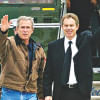
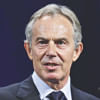
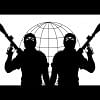
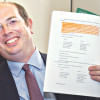
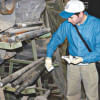


Comments